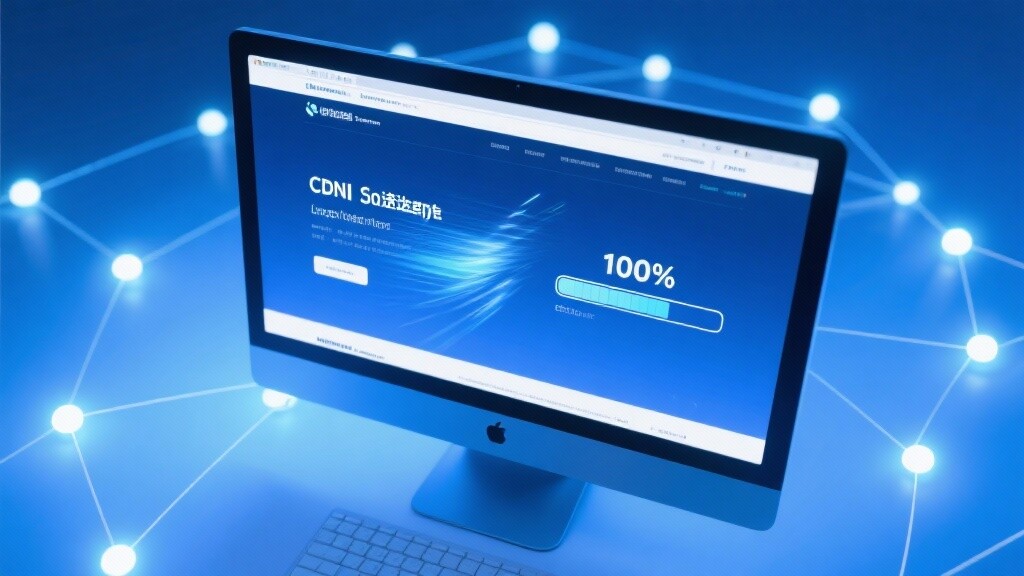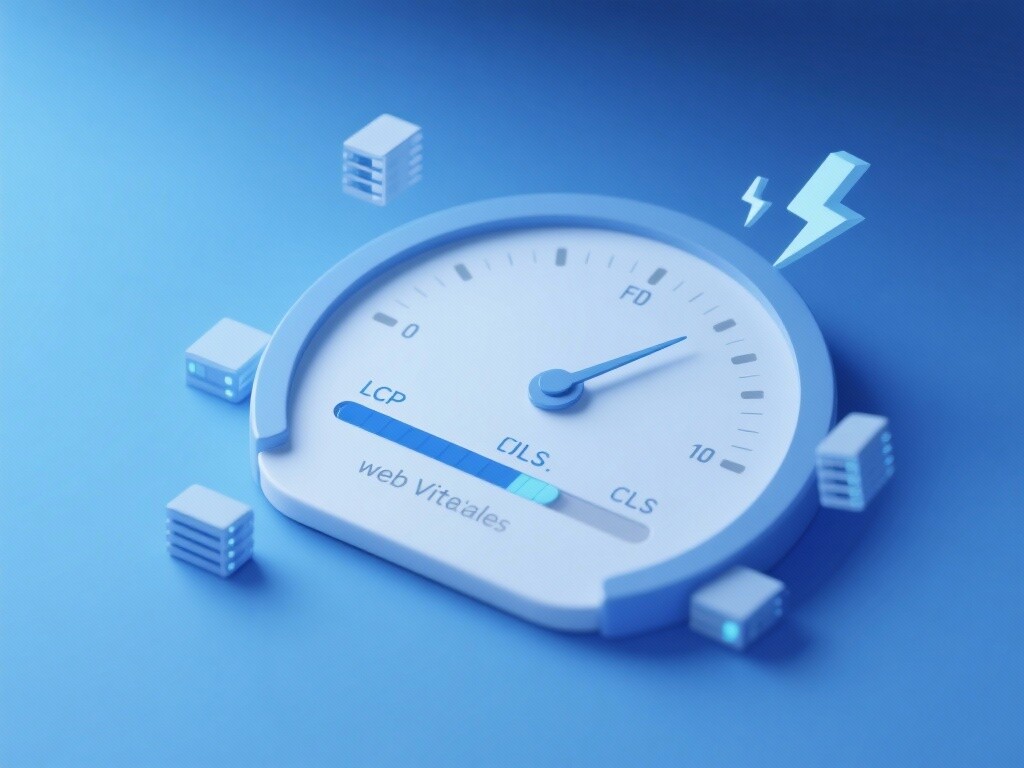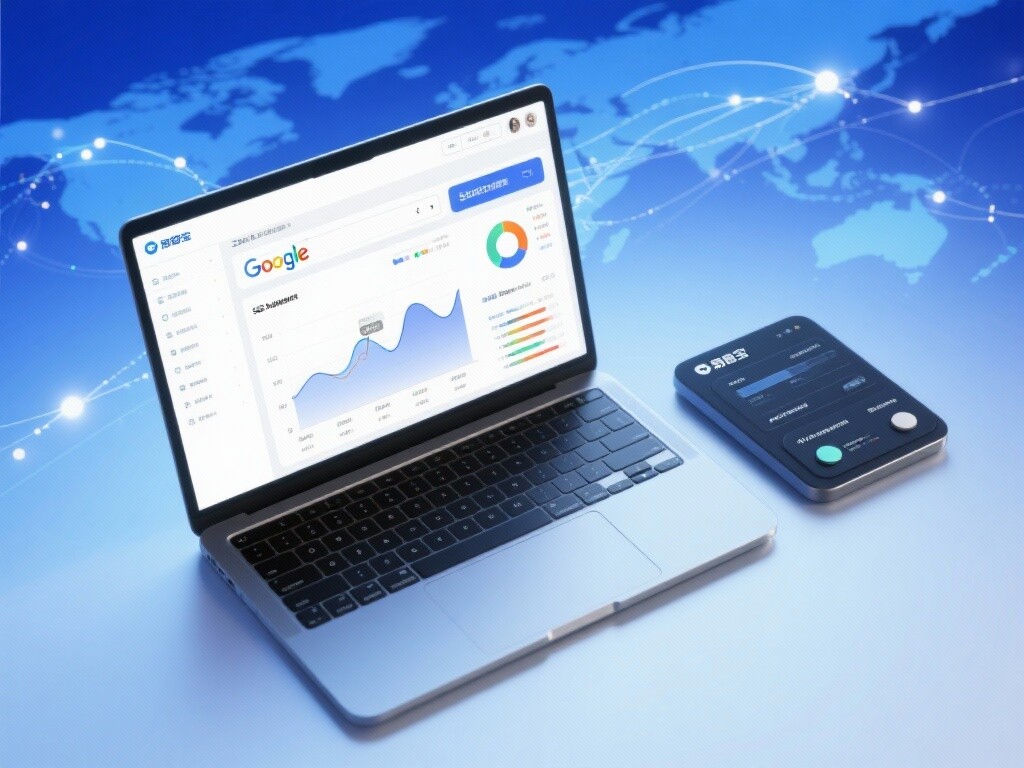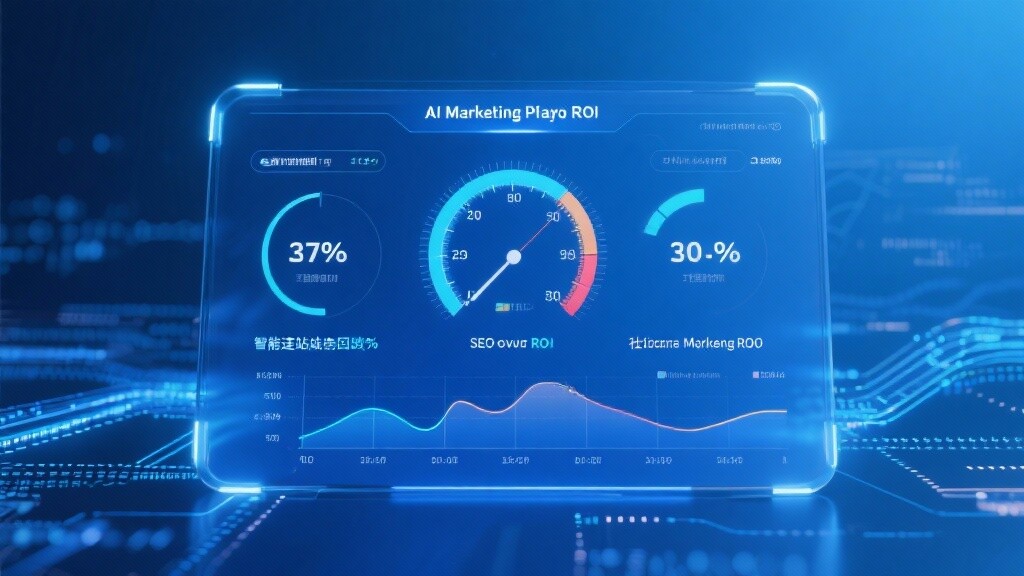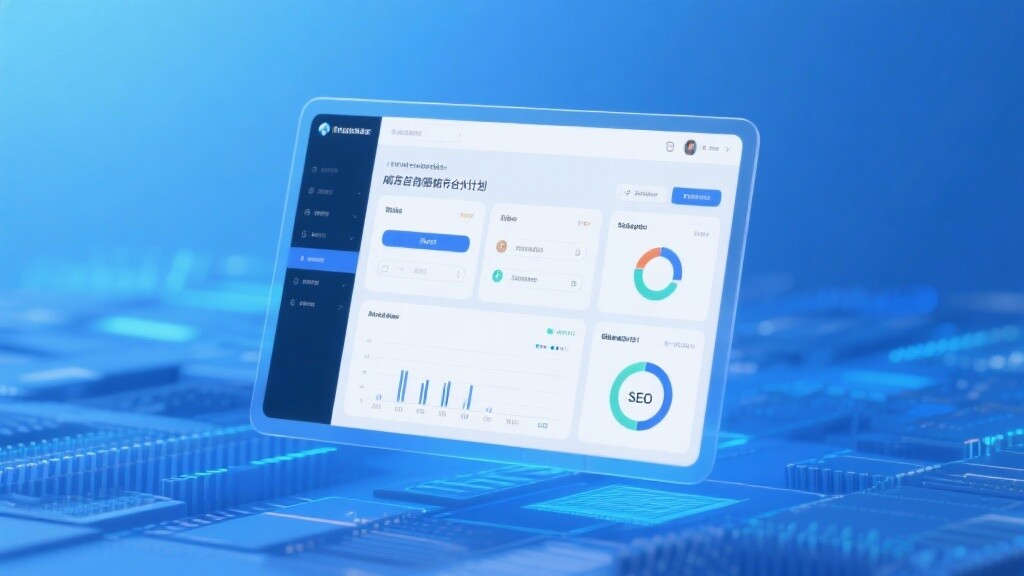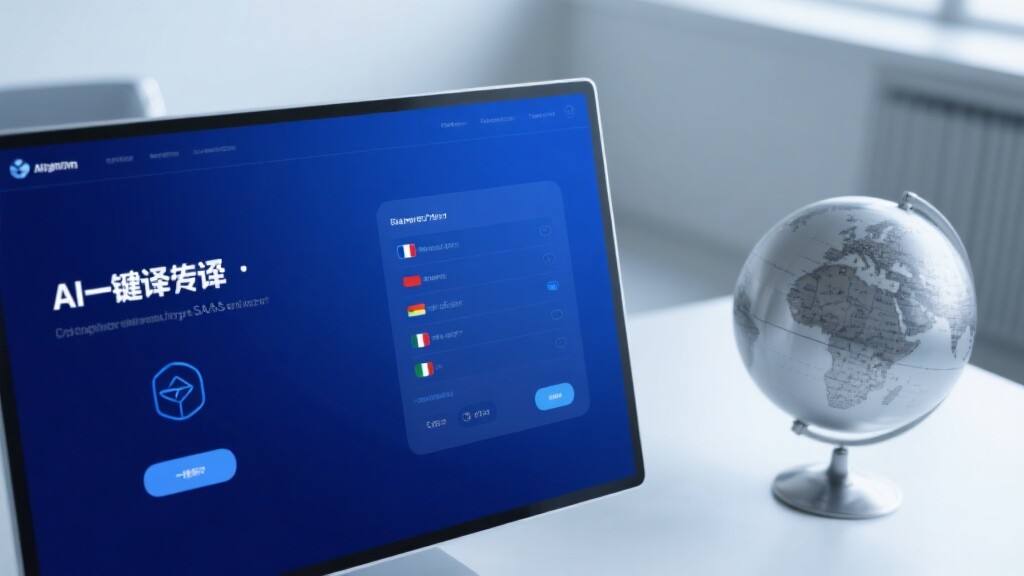EasyProfit Cloud Intelligent Website Marketing System Platform!
Definition of Website Loading Speed: The Core Metrics of User Experience and Search Engine Rankings
Website Loading Speed refers to the time required for users to see the complete content on the screen after clicking a link. This time is the most critical indicator for measuring website performance, user experience, and SEO friendliness.
The measurement standard for loading speed has evolved from the early "complete loading time" to focusing on perceived speed, i.e., when users can start interacting with the page.
Core Metrics of Website Loading Speed: Core Web Vitals
Google introduced Core Web Vitals (CWV) in 2020, quantifying perceived speed into three key metrics and using them as official ranking signals:
Largest Contentful Paint (LCP): Measures loading performance. The time from when the page starts loading to when the largest image or text block is rendered. The ideal value should be under 2.5 seconds.
First Input Delay (FID): Measures interactivity. The time from when a user first interacts with the page (e.g., clicks a button) to when the browser can respond. Due to the difficulty in accurately measuring FID in labs, Google has gradually promoted its replacement metric, INP (Interaction to Next Paint). The ideal value should be under 100 milliseconds.
Cumulative Layout Shift (CLS): Measures visual stability. The degree of unexpected movement of page content during loading. The ideal value should be below 0.1.
Direct Consequences of Slow Speed
High Bounce Rate: The longer users wait, the more likely they are to leave the page.
Low Conversion Rate: Slow-loading pages weaken user trust and purchase intent.
SEO Ranking Penalty: Search engines penalize slow-loading websites with poor user experience.
Reduced Crawl Efficiency: Crawl budget is wasted, slowing down the indexing of new content.
The Evolution of Website Loading Speed: From Technical Efficiency to User Perception
The history of website speed optimization is a story of continuous upgrades in network infrastructure, browser technology, and search engine algorithms:

1. Early Stage: Bandwidth and Server Bottlenecks (1990s-2000s)
In the early days of the internet, the main bottlenecks were network bandwidth and server processing power. Optimization focused on compressing images and simplifying HTML code. Metrics were primarily based on simple "page size" and "download completion time."
2. Browser and Frontend Optimization Era (2005-2015)
AJAX and Web 2.0 Rise: Increased website complexity made JavaScript and other frontend code the new performance bottlenecks.
CDN Popularization: Content Delivery Networks (CDNs) became widely used, caching content globally to reduce latency caused by physical distance.
Tool Emergence: Tools like Google PageSpeed Insights began providing frontend optimization recommendations.
3. Mobile-First and SEO Ranking Signals (2016-2020)
Mobile-First Indexing: Google announced it would primarily use mobile website content for indexing and ranking, making mobile speed a top priority.
HTTP/2 Protocol: The new HTTP/2 protocol improved data transfer efficiency through multiplexing and header compression.
Speed Ranking Signal: Google officially made mobile speed a ranking factor.
4. Core Web Vitals and User Experience Focus (2020-Present)
Core Web Vitals Launch: Google shifted from simple loading time to more precise user perception metrics (LCP, FID/INP, CLS).
AI-Driven Optimization: AI and machine learning are applied to CDNs, image compression, and code splitting for smarter performance improvements.
TLS 1.3 Adoption: Security protocols like TLS 1.3 improved loading efficiency while ensuring HTTPS security.
Technical Principles of Website Loading Speed: The Five Key Processes from Network to Rendering
Website loading speed is determined by a systemic chain involving network, server, browser, and frontend code collaboration.
1. DNS Lookup
Principle: The browser converts the domain name into the server's IP address.
Optimization: Use high-performance DNS providers or DNS prefetching to reduce resolution time.
2. Initial Connection/TLS Handshake
Principle: The browser establishes a connection with the server, including TCP and SSL/TLS handshakes (especially for HTTPS sites).
Optimization: Ensure servers support the latest TLS 1.3 protocol to reduce handshake latency.
3. Time to First Byte (TTFB)
Principle: The time from the browser sending a request to receiving the first byte of data from the server. This primarily measures server response speed.
Optimization: Optimize server-side code (backend logic), database queries, and caching mechanisms (e.g., Redis/Memcached), and choose high-performance server hosting.
4. Resource Loading and Processing
Principle: The browser downloads and processes all resources like HTML, CSS, JavaScript, images, and fonts based on code instructions.
Optimization: Compress (Gzip/Brotli), minify CSS/JS files, and lazy load non-critical images. This is the core of frontend optimization.
5. Rendering and Interactivity
Principle: The browser combines HTML structure, CSS styles, and JavaScript logic to render the page and make it interactive.
Optimization: Eliminate render-blocking resources, ensure critical CSS is inlined, and optimize JS execution order to achieve LCP and FID/INP goals.
Core Optimization Techniques and Application Strategies for Website Loading Speed
Website speed optimization is a multi-layered system. Our experts recommend starting with these key techniques:

1. Server and Infrastructure Optimization (TTFB Optimization)
Choose High-Performance Hosting: Avoid cheap shared hosting; upgrade to VPS or cloud servers.
Global CDN Deployment: Use CDN to distribute static resources globally, reducing latency and offloading server load.
Server-Side Caching: Deploy caching layers like Varnish or Redis to store dynamic content and avoid database queries for every request.
2. Frontend Code and Rendering Optimization (LCP & CLS Optimization)
Critical CSS Inlining: Extract the minimal CSS needed for above-the-fold rendering and write it directly into the HTML head to eliminate render-blocking.
JS Lazy Loading: Use
asyncordeferattributes for non-critical JavaScript files.Resource Minification and Compression: Use Gzip or Brotli for file compression and minify CSS, JS, and HTML code by removing redundant characters.
3. Image and Media Optimization (LCP & CLS Optimization)
Responsive Images: Use
<picture>tags orsrcsetattributes to ensure devices load the most appropriate image sizes.Next-Gen Image Formats: Prioritize WebP or AVIF, which offer far better compression than JPEG or PNG.
Lazy Loading: Enable lazy loading for images and videos below the fold, loading them only when users scroll into view.
4. User Experience and Visual Stability (CLS Optimization)
Reserve Space: Use CSS to set size placeholders for images, ads, or embedded content to prevent unexpected layout shifts during loading.
Avoid Dynamic Content Insertion: Avoid using JavaScript to dynamically insert content at the top or key areas of the page.
5. Strategic SEO Integration
AMP (Accelerated Mobile Pages): For news and content sites, AMP technology enables near-instant loading, improving mobile user experience.
Webmaster Tools Monitoring: Regularly check the "Core Web Vitals" report in Google Search Console to track optimization progress and new speed issues.
EasyWin: Website Speed and SEO Integration Experts
EasyWin understands that website speed is the lifeline of SEO. We provide a performance-centric, conversion-driven website optimization solution:
Comprehensive Speed Audit: Use tools like Google PageSpeed Insights, Lighthouse, and WebPageTest for in-depth performance diagnostics to identify all TTFB, LCP, and CLS bottlenecks.
Backend and Server Optimization: Optimize database queries, server configurations, and caching strategies to reduce TTFB at the root.
Frontend Code Restructuring: Refactor HTML/CSS/JS structures to implement critical CSS inlining and non-critical resource lazy loading, ensuring LCP compliance.
Core Web Vitals Compliance: Our goal is to ensure your website passes all Core Web Vitals assessments in GSC reports, gaining search engine trust and ranking advantages.
Ongoing Performance Monitoring: Provide customized performance reports and continuously adjust optimization strategies based on Google algorithm updates.
EasyWin is committed to transforming your website loading speed into industry-leading user experience and strong SEO competitiveness.
FAQ

Customer Reviews
 Successful cases of industrial and trade enterprises going to sea: how do they multiply orders through SEO?Through the real case analysis of industrial and trade enterprises to go to sea SEO full chain method, covering the independent station construction, multi-language optimization, AI content production and other core links, combined with the YiYingBao tool to show the technical solutions.
Successful cases of industrial and trade enterprises going to sea: how do they multiply orders through SEO?Through the real case analysis of industrial and trade enterprises to go to sea SEO full chain method, covering the independent station construction, multi-language optimization, AI content production and other core links, combined with the YiYingBao tool to show the technical solutions. Must-Read for Business Evaluation: Comprehensive Strategy for Calculating ROI of AI Marketing PlatformsThis article provides an in-depth analysis of the ROI calculation system for AI marketing platforms from both technical evaluation and business decision-making perspectives. It covers key metrics including intelligent website system performance indicators, quantifiable SEO optimization results, cost analysis of social media marketing strategies, and includes comparative data from real-world case studies.
Must-Read for Business Evaluation: Comprehensive Strategy for Calculating ROI of AI Marketing PlatformsThis article provides an in-depth analysis of the ROI calculation system for AI marketing platforms from both technical evaluation and business decision-making perspectives. It covers key metrics including intelligent website system performance indicators, quantifiable SEO optimization results, cost analysis of social media marketing strategies, and includes comparative data from real-world case studies. Global Server Acceleration Performance Test: 300% Faster Page Load SpeedThis article details the core advantages, application scenarios, and real-world cases of EasyCloud's global server acceleration technology. Through AI-driven marketing platforms and intelligent website solutions, it achieves 300% faster page load speeds, 35% improved SEO optimization results, and supports global business growth.
Global Server Acceleration Performance Test: 300% Faster Page Load SpeedThis article details the core advantages, application scenarios, and real-world cases of EasyCloud's global server acceleration technology. Through AI-driven marketing platforms and intelligent website solutions, it achieves 300% faster page load speeds, 35% improved SEO optimization results, and supports global business growth. Multi-Language Website Urban Partner Program: Unlocking Global Market OpportunitiesThis article details Eachimall's Multi-Language Website Urban Partner Program, including its core advantages, technical support, and market opportunities, aiming to help business decision-makers understand how to leverage this initiative for global growth.
Multi-Language Website Urban Partner Program: Unlocking Global Market OpportunitiesThis article details Eachimall's Multi-Language Website Urban Partner Program, including its core advantages, technical support, and market opportunities, aiming to help business decision-makers understand how to leverage this initiative for global growth.


